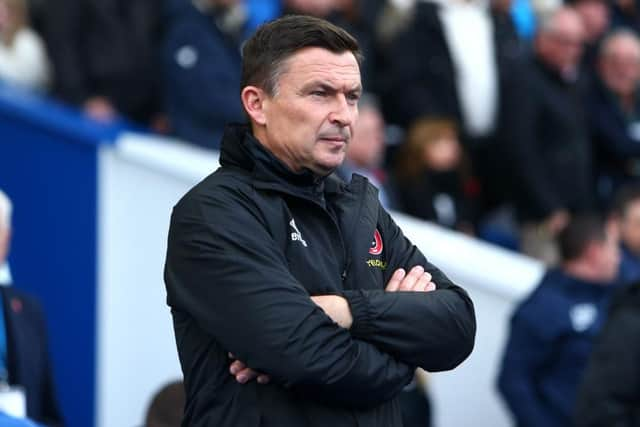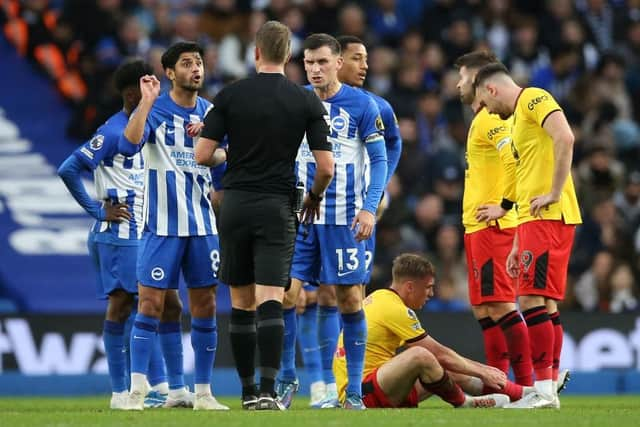Sheffield United's tactical battle of Brighton: Mark Hudson's input, 'we're not playing a system now' and reacting to the tweaks
Under first Graham Potter and now Roberto de Zerbi, Brighton are one of the cleverest and most flexible teams in the Premier League but for 69 minutes the Blades were able to just about contain them, then pounce when a red card for Mahmoud Dahoud tipped the balance.
Formations are much discussed these days but modern coaches are making the chat redundant. In September Arsenal's Mikel Arteta claimed to have used 36 different shapes against Fulham and 43 against Manchester City. That sounded a bit far-fetched but Heckingbottom went the other way against the Seagulls – claiming to have abandoned all pretence of a shape once it was 11 v 10, as he said he had in the attacking sense at home to Manchester United.
Advertisement
Hide AdAdvertisement
Hide AdBrighton started with what might loosely be called a 3-4-3, but not a symmetrical one. The centre-backs lined up in orthodox fashion but right wing-back Pascal Gross had three central midfielders alongside him, leaving Simon Adingra alone against Jayden Bogle down the left.
As the Blades tried to deal with that – briefly dropping Gustavo Hamer in to help left wing-back Luke Thomas, then finding other midfield solutions which freed up their creator – Brighton kept changing too, Gross pushing still higher, Facundo Buonanotte effectively going from right winger to second centre-forward, from where he flicked the ball back to Adingra, drifting inside, to open the scoring.
Kaoru Mitoma's half-time introduction for Adam Lallana gave Brighton more threat down the left and pushed Adingra inside, Joao Pedro hugging the right touchline as Buonanotte's replacement, tucking Gross inside.
The Brighton press box is much lower than most, but it seemed as though Mark Hudson – the defensive expert of Heckingbottom's three assistants – was popping up from the bench much more often than usual to give instructions and exchange ideas.
Advertisement
Hide AdAdvertisement
Hide Ad"I speak to them all and generally it's about different things," said Heckingbottom, who tends to have Stuart McCall closest and Jack Lester for attacking input.


"We decided to stay with a back three because they're one of the best teams at trying to exploit the space in front of your centre-backs.
"They had two centre-forwards, I don't even call them that, they got under the ball to play a pass into the space with the wingers coming in.
"We always wanted to make sure we had a spare centre-back so Huds' job was to make sure that was happening all the time.
Advertisement
Hide AdAdvertisement
Hide Ad"Brighton quickly figured out we were dealing with that and started moving Dahoud to the (left) side so we were man for man. He was overloading George (Baldock), giving Jayden a problem.


"It was a good battle like that, they're a good side.
"When I watch the game I'll look at what did we get right?, the subs, the lead-up, I'll be looking at was the information we were giving during half-time good because you're certainly picking up on the little changes they made which were tough to deal with."
Whilst Brighton dominated possession in the first half in particular, the Blades limited them to just six shots before the break, four on target. During the interval Heckingbottom impressed on his players the need to be more adventurous in possession, but it was only when Dahoud stamped on Ben Osborn in the 69th minute that the game really opened up for his side.
"The instructions at that point were no matter what they did we could go man to man and still have a spare man at the back," said Heckingbottom. "The message was almost, 'We're not playing a system, we're going man for man and having a spare man at the back.' It just made things that little bit simpler."
Advertisement
Hide AdAdvertisement
Hide Ad

That greater simplicity allowed centre-back Auston Trusty to find himself high up the field to start the 74th-minute move which ended with Adam Wesbter's own goal.
"Too high at that moment, to be fair!" quipped Heckingbottom.
"When we play that (3-4-2-1) shape – and Auston's not played that shape for us much at this moment in time – we would encourage that centre-back to go.
"I felt in the second half Brighton's moments would come on the counter(-attack) with the players they've got, the two wingers when Joao Pedro came on, but Auston had gone high and wide and Luke had tucked in so we were pretty safe.
Advertisement
Hide AdAdvertisement
Hide Ad"It was a couple of really good passes and when you play a wing-back against a back four (as Brighton were then) you try to play central passes to narrow them up and get the wing-back down the side. Luckily for us we managed to do that."
It made for a fascinating tactical battle to watch.
"It's part of the game and getting the preparation right in the week is our job and trying to get good instructions on but you have to affect the players," said Heckingbottom.
"We say all the time when we're doing anything tactical unless you believe, unless you're really ready to step on and make it happen, it's irrelevant.
"The information could be spot on, the timing of it can be good, but if you cannot affect the players, it's irrelevant."